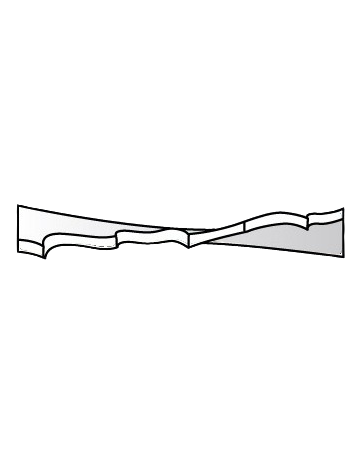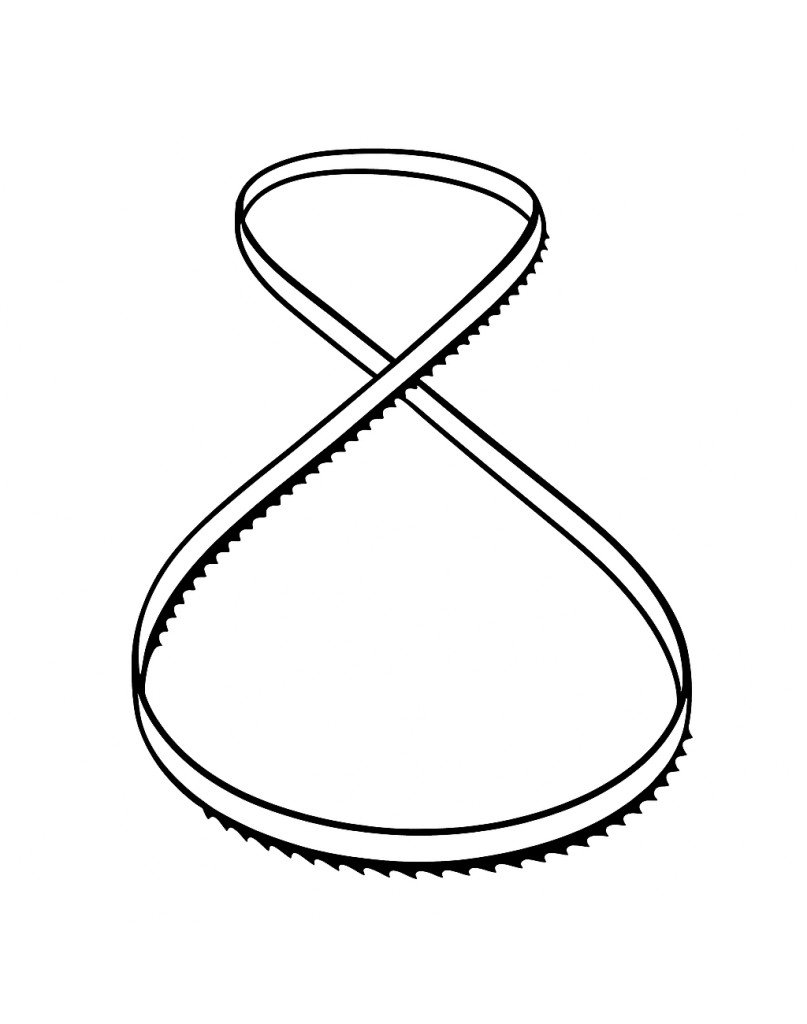
A twisted bandsaw blade is not only an obstacle to achieving accurate, smooth cuts, but it can also compromise the safety and longevity of both the blade and the bandsaw itself. Twisting often results from a combination of operational errors, machine misadjustments, poor-quality materials, or even pre-existing blade damage. By systematically examining the root causes and implementing best practices, users can significantly reduce the risk of blade twisting and maintain optimal performance. The following key factors contribute most frequently to bandsaw blade twisting, along with practical solutions to address each one:
1. Excessive Feed Rate or Force
One of the primary causes of blade twisting is pushing the workpiece through the saw too quickly, or with excessive pressure. When the feed rate is too high, especially if the blade is dull or the material is especially hard, the blade is forced off its optimal path. This excessive pressure causes the blade to deflect, leading to twists, kinks, and even permanent deformation.
Solution: Operators should feed material at a controlled and steady pace, letting the blade do the work. Maintaining a sharp blade is crucial, as dull blades require more force and are much more prone to twisting. The feed rate should always be adapted to the hardness and thickness of the material, with harder and thicker materials requiring slower, gentler feeds.
2. Incorrect Blade Tension
Blade tension is a crucial setting which, if neglected, leads to instability and blade twisting. Insufficient tension means the blade is not held firmly between the bandsaw wheels, making it prone to meandering under load and twisting even under moderate pressure. Over time, blade tension may decrease due to stretching or settling of the metal.
Solution: Always follow the manufacturer’s recommendations for blade tension, using a proper gauge if available. Operators should also check and adjust tension regularly, especially after installing a new blade or following extensive use. In practice, it is safer to err slightly on the side of more tension (within machine limits) than to run a blade too loose.
3. Misaligned or Worn Blade Guides
Bandsaw blade guides (both above and below the table) are designed to keep the blade tracking straight and stable. If these guides are misaligned or worn, the blade loses critical support. This lack of guidance enables the blade to twist, especially during heavy or angled cuts.
Solution: It is essential to align the guides so they are parallel and in proper contact with the blade. Guide blocks or bearings should also be inspected for wear and replaced as needed, ensuring the blade is always properly supported.
4. Inadequate Blade Support
Closely related to guide alignment is the positioning of the guides in relation to the workpiece. When the guides are too far from the material being cut, the blade can easily flex or twist.
Solution: For every cut—especially with thicker materials—set the upper and lower guides as close to the workpiece as possible, just above and below the level of the cut. This provides the blade with maximum support against twisting.
5. Poor Blade Quality
Not all bandsaw blades are created equal. Low-quality blades, made from inferior steel or with poor heat treatment, are far more susceptible to twisting and permanent deformation. Cheap blades may also have inconsistent welds or improper hardening along the tooth line.
Solution: Invest in high-quality blades from reputable manufacturers, suitable for your specific material and cutting application. Inspect new blades for visible defects before use.
6. Incorrect Cutting Technique
Using improper technique—such as applying side pressure to force the blade along a curve—places unnatural stress on the blade, increasing the chance it will twist. This is especially common when trying to cut tight curves without proper relief cuts.
Solution: Let the blade do the cutting, applying only forward pressure and guiding the workpiece smoothly. For tight or complex shapes, make relief cuts to remove waste material and reduce the amount of bending required from the blade.
7. Material Properties
Some materials, particularly metals with internal stress or woods with knots, can cause a blade to twist as the cut relieves latent tension in the material.
Solution: Plan cuts to avoid areas of high stress when possible. In difficult materials, make several shallow passes instead of a single, deep cut to minimize stress and potential movement.
8. Blade Overheating
Repeated use or high-speed cutting generates heat, which can soften the steel in the blade and make twisting more likely.
Solution: Use appropriate coolants, lubricants, or slow down the cutting speed—especially on metal bandsaws. For wood, pause to let the blade cool if making demanding cuts.
9. Pre-existing Blade Damage
A blade that was previously kinked, bent, or otherwise damaged will be weak at the damaged section and much more likely to twist under normal use.
Solution: Carefully inspect blades before each use. Any blade showing evidence of kinks, bends, or other deformities should be replaced immediately.
10. Bandsaw Wheel Issues
Finally, bandsaw wheels themselves can contribute to blade twist. If the wheels are not co-planar, or if one or both have worn tires, the blade may not track correctly, causing uneven tension and twisting.
Solution: Check wheel alignment regularly using a straight edge, and replace any worn or damaged tires. Both wheels’ faces should be in the same plane to allow proper, parallel blade tracking.
Conclusion
A twisted bandsaw blade is usually the result of several compounding factors—ranging from user technique to machine setup, blade quality, and even the properties of the workpiece. The best prevention is systematic: ensure proper blade tension, guide alignment, and support; use sharp, high-quality blades; adopt good cutting techniques; and maintain your saw regularly. If a blade twists severely, it should be replaced, as the structural integrity is compromised and reliable, safe operation can no longer be guaranteed.
